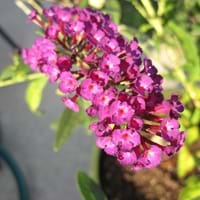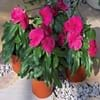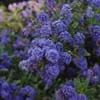Life Span
Perennial
Perennial
Type
Shrub
Flowering Plants, Shrubs
Origin
Russia/Siberia, China
Africa, America, Asia
Types
Dwarf Siberian Peashrub, Sutherland Peashrub, Weeping Siberian Peashrub
Lockinch, Petite Indigo, White Profusion
Number of Varieties
Not Available
Habitat
Forest edges, gully slopes, Open Forest, Riverbanks, Sandy areas
Along Railroads, River side, Roadsides
USDA Hardiness Zone
2-8
5-10
Sunset Zone
A1, A2, A3, 1a, 1b, 2a, 2b, 3a, 3b, 4, 5, 6, 7, 8, 9, 10, 12
H1, 2a, 2b, 3a, 3b, 4, 5, 6, 7, 8, 9, 10, 11, 12, 13, 14, 15, 16, 17, 18, 19, 20, 21, 22, 23, 24
Habit
Narrow Upright/Fastigiate
Arching/Fountain-shaped
Flower Color
Yellow
Blue, Pink, Purple, Red, White
Flower Color Modifier
Not Available
Not Available
Fruit Color
Brown
Not Available
Leaf Color in Spring
Light Green
Gray Green
Leaf Color in Summer
Light Green
Gray Green, Light Green
Leaf Color in Fall
Light Green, Light Yellow
Gray Green, Light Green, Yellow green
Leaf Color in Winter
Not Available
Not Available
Leaf Shape
Pinnate
Egg-shaped
Plant Season
Spring
Fall, Spring, Summer, Winter
Sunlight
Full Sun
Full Sun, Part sun, Partial shade
Type of Soil
Clay, Loam
Loamy, Sandy, Well drained
The pH of Soil
Acidic, Neutral, Alkaline
Neutral, Slightly Acidic, Slightly Alkaline
Soil Drainage
Well drained
Well drained
Tolerances
Drought, Salt
Drought, Pollution, Salt, Soil Compaction
Where to Plant?
Ground
Ground, Pot
How to Plant?
Cuttings, Layering, Seedlings
Seedlings, Stem Planting, Transplanting
Plant Maintenance
Low
Medium
Watering Requirements
Keep the ground moist but not water-logged, occasional watering once established
Form a Soil ring to water efficiently, Water Deeply, Water twice a day in the initial period
In Summer
Moderate
Lots of watering
In Spring
Ample Water
Moderate
In Winter
Average Water
Average Water
Soil pH
Acidic, Neutral, Alkaline
Neutral, Slightly Acidic, Slightly Alkaline
Soil Type
Clay, Loam
Loamy, Sandy, Well drained
Soil Drainage Capacity
Well drained
Well drained
Sun Exposure
Full Sun
Full Sun, Part sun, Partial shade
Pruning
Remove dead branches, Remove dead or diseased plant parts
Cut or pinch the stems, Prune for shortening long shoots, Prune if you want to improve plant shape, Prune ocassionally, Remove damaged leaves, Remove dead or diseased plant parts, Remove deadheads, Remove shoots
Fertilizers
fertilize in spring
All-Purpose Liquid Fertilizer
Pests and Diseases
blister beetles, Septoria leaf spot, stem decay
Downy mildew, Leaf spot, Spider mites
Plant Tolerance
Drought, Salt
Drought
Flower Petal Number
Single
Single
Foliage Texture
Fine
Medium
Foliage Sheen
Matte
Matte
Invasive
Sometimes
Sometimes
Attracts
Bees, Hummingbirds
Butterflies, Hummingbirds
Allergy
Diarrhea, Vomiting
Vomiting
Aesthetic Uses
Not Used For Aesthetic Purpose
Showy Purposes
Beauty Benefits
used as a dye
Not Available
Environmental Uses
Erosion control, Fixes Nitrogen, Food for animals, Shelter for wildlife, Windbreak
Air purification
Medicinal Uses
Cancer, Dysmenorrhea, Gynaecological
Not Available
Part of Plant Used
Leaves, Seeds
Flowers, Leaves
Other Uses
Fibre, For making oil, Shelterbelt, Used as a dye, Used for making informal hedge
Showy Purposes, Used as Ornamental plant
Used As Indoor Plant
No
No
Used As Outdoor Plant
Yes
Yes
Garden Design
Hedges, Mixed Border, Screening, Wind Break
Edging, Feature Plant, Foundation
Botanical Name
CARAGANA arborescens
Buddleia davidii
Common Name
Siberian peashrub, Siberian pea-tree, caragana
Butterfly Bush, Summer Lilac, Butterflybush
In Hindi
Siberian peashrub
Butterfly Bush
In German
Gemeiner Erbsenstrauch
Schmetterlingsstrauch
In French
Caraganier de Sibérie
buisson de papillon
In Spanish
Siberian Peashrub
arbusto de las mariposas
In Greek
Siberian Peashrub
Butterfly Μπους
In Portuguese
Siberian peashrub
arbusto de borboleta
In Polish
Karagana syberyjska
Butterfly Bush
In Latin
Siberian Peashrub
papilio rubo
Phylum
Magnoliophyta
Spermatophyta
Class
Magnoliopsida
Dicotyledonae
Family
Fabaceae
Scrophulariaceae
Clade
Angiosperms, Eudicots, Rosids
Angiosperms, Asterids, Eudicots
Tribe
Not Available
Not Available
Subfamily
Not Available
Not Available
Number of Species
Not Available
Season and Care of Siberian Peashrub and Butterfly Bush
Season and care of Siberian Peashrub and Butterfly Bush is important to know. While considering everything about Siberian Peashrub and Butterfly Bush Care, growing season is an essential factor. Siberian Peashrub season is Spring and Butterfly Bush season is Spring. The type of soil for Siberian Peashrub is Clay, Loam and for Butterfly Bush is Loamy, Sandy, Well drained while the PH of soil for Siberian Peashrub is Acidic, Neutral, Alkaline and for Butterfly Bush is Neutral, Slightly Acidic, Slightly Alkaline.
Siberian Peashrub and Butterfly Bush Physical Information
Siberian Peashrub and Butterfly Bush physical information is very important for comparison. Siberian Peashrub height is 460.00 cm and width 300.00 cm whereas Butterfly Bush height is 7.50 cm and width 4.00 cm. The color specification of Siberian Peashrub and Butterfly Bush are as follows:
Siberian Peashrub flower color: Yellow
Siberian Peashrub leaf color: Light Green
Butterfly Bush flower color: Blue, Pink, Purple, Red and White
- Butterfly Bush leaf color: Gray Green
Care of Siberian Peashrub and Butterfly Bush
Care of Siberian Peashrub and Butterfly Bush include pruning, fertilizers, watering etc. Siberian Peashrub pruning is done Remove dead branches and Remove dead or diseased plant parts and Butterfly Bush pruning is done Cut or pinch the stems, Prune for shortening long shoots, Prune if you want to improve plant shape, Prune ocassionally, Remove damaged leaves, Remove dead or diseased plant parts, Remove deadheads and Remove shoots. In summer Siberian Peashrub needs Moderate and in winter, it needs Average Water. Whereas, in summer Butterfly Bush needs Lots of watering and in winter, it needs Average Water.





